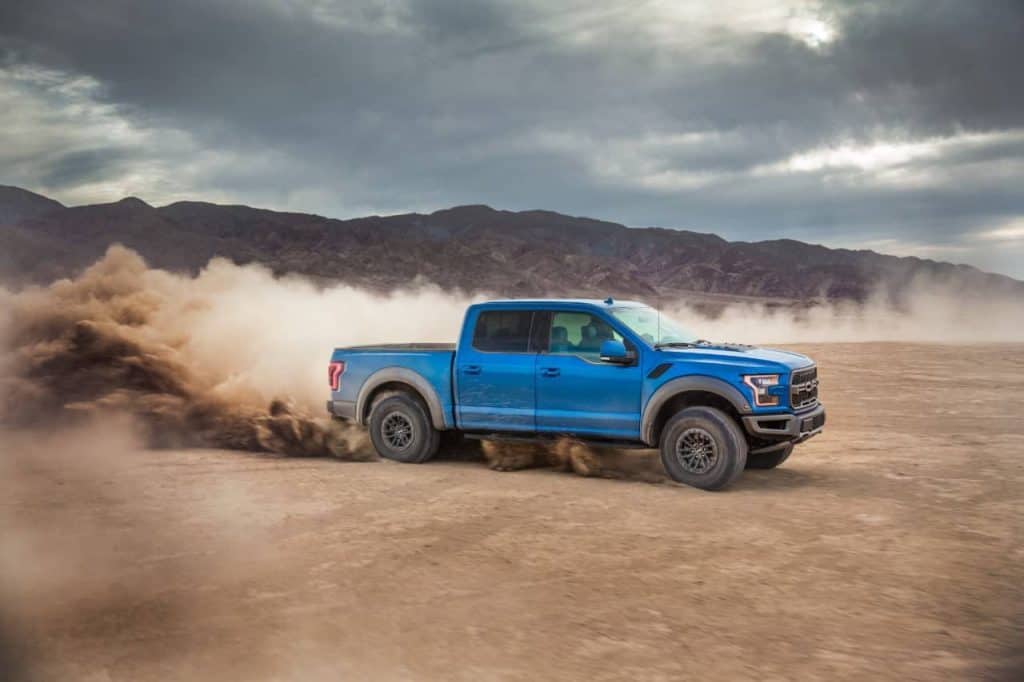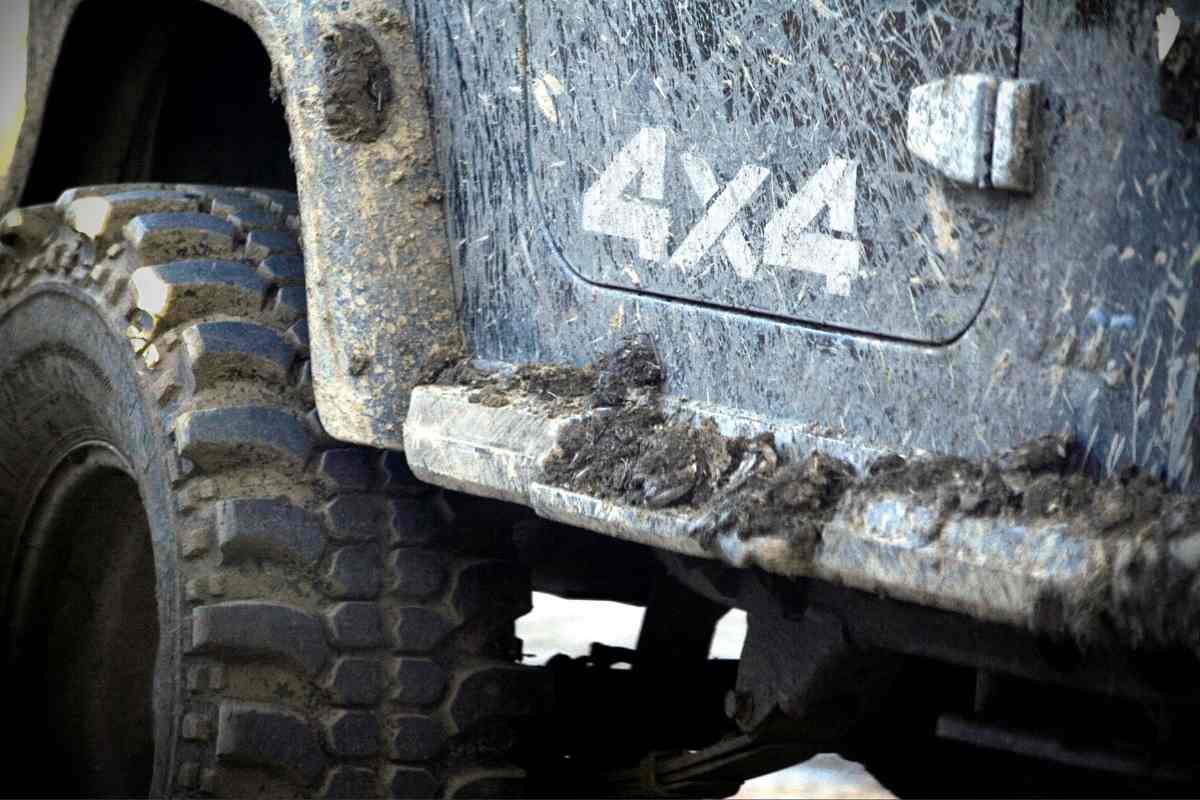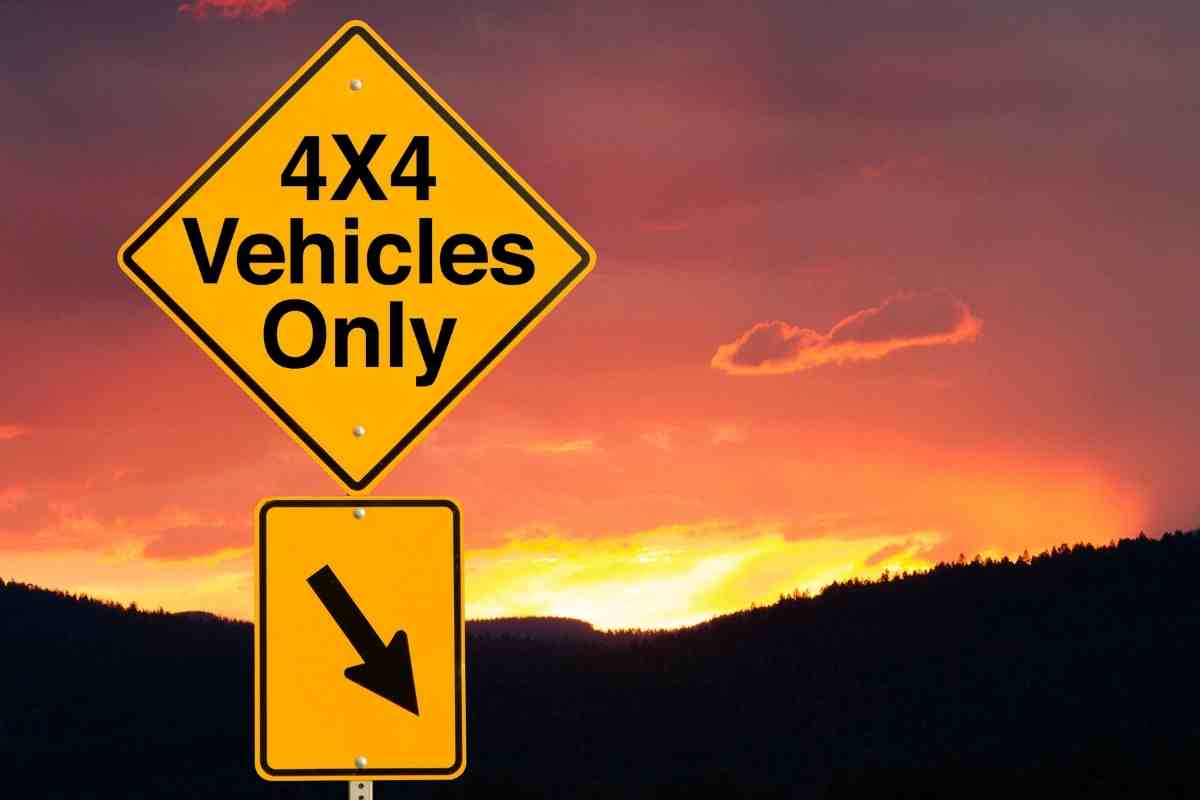how to drive a 4×4 | 15 Must-Knows Tips
Transitioning from driving a 2WD to mastering a 4×4? This guide simplifies the process, highlighting the essential settings and the right speeds for various conditions. Dive deep into the techniques, best practices, and understand the difference between AWD and 4×4 to ensure smooth and safe rides. Let’s get started!
![How To Drive A 4X4 | 15 Must-Knows Tips 1 Driving In 4 Wheel Drive [15 Must-Knows Tips]](https://fourwheeltrends.com/wp-content/uploads/2021/03/Driving-In-4-Wheel-Drive-14-Must-Knows-Tips.jpg)
How 4wd Works
When you have 4wd selected, engine power to the transmission is split equally between the front and rear axles. Although most of the torque is transferred to the tires, there has to be sufficient traction to propel the vehicle forward.
This is where the locking differentials come in. They provide equal power to all four wheels, no matter if part of the vehicle is off the ground.
This allows the tires that are contacting the ground to receive a continuous amount of torque for maximal traction.
How To Engage The 4wd On Your Vehicle
Place the shift selector knob in the 4H slot as soon as the surface becomes slippery or when there is uneven terrain present.
You may have to stop to perform this step if you have an older vehicle. But with newer trucks and jeeps, you can safely transition at up to about 55 MPH speeds.
Once in 4wd mode, the transfer case will split the torque evenly between the front and rear axles. The automatic differential locking mechanism then locks all four wheels. This will make the vehicle slightly more difficult to turn after that.
Is It OK To Use 4 Wheel Drive On The Highway?
Technically speaking, you can use your 4wd setting on the highway. However, I wouldn’t advise doing that very often because it can damage your drivetrain.
Engaging the 4wd increases the driveshaft torque and supplies power to all four tires. This means that there is an additional force applied to the drivetrain components.
Over time, this added strain on those vital parts could mean expensive repairs earlier than needed.
It is important to use only 4wd on the highway during inclement weather, such as ice or snow. If you are going to engage the 4wd while on the pavement, use the Four-High (4H) setting.
And never use Four-Low (4L) while driving at speeds above 30 MPH. This could severely damage the drivetrain components in a short amount of time.
If you’re looking to increase traction while driving on the highway during bad weather, that’s okay. Just remember that you will not receive any increased braking or stability in 4wd. So, it is best to slow down while driving in these conditions.
Can You Switch From 2H To 4H While Driving?
You should always check your owners manual to see what the manufacturer recommends. Some vehicles will allow you to shift from 2H to 4H while in motion, while with other, older models, you may have to stop or at least slow down.
If you are going to shift from 2H to 4H while driving, it is best to let up on the accelerator for about a second or two after you do so. This will ensure that the transfer case engages smoothly during the transition.
However, on most vehicles, shifting from 4H to 4L is different. You will have to come to a complete stop.

Also, keep in mind that you should only shift gears when there is a change in road conditions. For example, if you drive from a paved road to an unimproved area, you will undoubtedly need to make the switch.
Is It Bad To Leave Your Truck In 4 Wheel Drive Overnight?
There isn’t much risk to your vehicle if you keep it in 4wd overnight. The reason for this is simple. It’s not moving.
There could also be a benefit to keeping it in gear while parked. The added traction you get while in 4wd mode could help keep the vehicle from sliding downhill on slippery, icy, or snowy surfaces. It utilizes the drivetrain to help the parking brake do its job better.
However, instead of engaging the 4wd, it may be better to use another gear. Here are two rules of thumb when parking your 4wd vehicle in inclement weather:
While parked on a decline, use the reverse gear.
If parked facing an incline, use 1st gear.
In these situations, the transmission gearbox will take over for the parking brake in case it fails. And, it is undoubtedly essential to have your vehicle stationary while parked on a hill.
Why Don’t All 4×4’s Come Standard With Permanent 4wd?
Most vehicles that have 4WD capability are “part-time.” This means that you drive it in 2WD mode most of the time. Once you go off-road, you have to shift it into 4WD.
But there are some trucks and jeeps that have permanent 4WD capability. They allow you to drive on any road or surface without the need to switch from 2WD to 4WD.
But there are some trade-offs for having that level of convenience:
- A permanent 4WD vehicle usually has a higher price tag initially.
- Since heavier parts are installed, it can substantially increase your truck’s or jeep’s weight.
- There are traditionally higher repair costs associated with permanent 4WD vehicles.
- They usually have a lower towing capacity than their part-time 4wd counterparts.
Still, the permanent 4wd vehicles have a considerable advantage when driving offroad and in icy weather. They tend to grip the various surfaces better. And cornering is usually improved for most conditions since all four tires are doing their part to keep the vehicle on the road.
Does 4WD Use More Gas?
As mentioned earlier, a 4wd vehicle has considerably more weight added to it. This is due to the increase in the various drivetrain components necessary to turn all four wheels simultaneously.
That increased weight usually translates into poor gas mileage. But regardless of the inherent increase in fuel costs, most 4wd enthusiasts feel it is an acceptable trade-off.

How Fast Can You Go In 4 Wheel Drive?
Here are a few recommendations for speed limits while in 4wd:
4H: It is best to keep your speed at 55 MPH or below at this setting. However, you could go faster without damaging the vehicle.
But there is usually a good reason you have it in 4wd in the first place: The road conditions probably are not the best. So, for that consideration alone, it is preferable not to push it.
4L: In some vehicles, you can go as high as 40 MPH in this setting. However, most owner’s manuals will state that going over 30 MPH is not such a good idea.
Is 4WD Faster Than 2WD?
In 2wd mode, acceleration is greater since there are fewer gears for the transmission to contend with. So, the vehicle can pick up speed a little quicker than in 4wd.
However, the 4wd setting has the 2wd beat as far as power. There is more torque available in 4wd mode. This means that it has more climbing ability on hills, especially when traversing rough terrain.
Why Is It Harder To Turn In 4 Wheel Drive?
In 2wd, the wheels will rotate at different speeds while cornering. The outside wheels have to travel a greater distance than the inside wheels in this scenario. So, the inside tires rotate at a greater RPM than the outside tires.
To get better traction in 4wd, all four wheels are locked together, spinning at the same rate of RPM. In other words, the inside tire is not allowed to rotate quicker than the outside. The result is a slower, harder turn and an additional workload put on the driver.
How Often Should I Put My Truck In 4 Wheel Drive?
Like I mentioned earlier, you should engage your 4wd only when necessary. And that usually doesn’t mean cruising around in the city during dry weather.
But use the 4wd feature anytime you’re offroad. That’s why it’s there, But it’s best to make sure it is disengaged when traveling long distances on smooth, dry pavement.
But there are times when you may go weeks or even months without using your 4wd. In those instances, I recommend keeping the transfer case lubricated by switching it on once in a while. Just be sure to do it off-road.
Is Driving In 4H Bad?
While in the 4H position, you can usually drive at normal speeds. You can even go for a while on dry pavement. But it’s best to engage the 4wd when traveling on gravel roads, sandy areas, or icy highways.
However, it would be best if you did not drive all the time in the 4H setting.
Doing that could cause increased tire wear, excessive noise underneath the vehicle, and damage to the drivetrain. And relentless use in 4H on pavement can also cause the front axles to break.
How Far Can You Drive In 4 High?
You can drive in the 4-high setting as long as you want and as long as you do it off-road. Simply put, a 4WD vehicle is not meant for the pavement.
Suppose you happen to leave it in 4H while driving long distances on a normal, dry road. You could cause a lot of damage to the transfer case. That goes especially for driving in the 4H setting while on pavement and making a lot of turns.
So, it is best to avoid it altogether. The point is when you are coming off of dirt or other slippery surfaces, be sure to set the vehicle back to 2WD mode.

Should I Drive In 4 High Or Low?
4wd vehicles typically have three selector knob settings:
- 2H
- 4L
- 4H
2H is the 2wd setting for routine, everyday trips throughout the city on dry pavement. Switch to the 4H position when venturing off-road.
Set the vehicle to 4L when going up steep, slippery inclines. This is also true for traversing heavy terrain. The maximum speed for these conditions is about 20 to 30 MPH. Then, it’s best to reset back to 4H for speeds over that.
Learn More about how fast to drive in 4L and 4H settings.
What’s The Difference Between 4wd And All-Wheel-Drive (AWD)?
Both 4wd and AWD are designed to provide maximum traction, no matter what the road conditions. The difference is in the way each achieves that goal.
AWD sends power from the engine to all four tires, similar to 4wd. However, instead of off-road, it is intended solely for on-road driving.
AWD will help propel the vehicle better than a 2wd can. That’s true during inclement weather or on dry pavement. AWD is even used in high-performance sports cars simply to increase acceleration from a dead stop.
AWD has the distinct advantage of being used on normal roads because each tire rotates at its own speed. This decreases the stress on the drivetrain, unlike when you try to take sharp turns on non-slippery surfaces in 4wd.
As a result, AWD is gaining in popularity. You will find it now on most passenger cars and SUVs. And even some of the newer trucks will feature AWD instead of their 4wd counterpart.
Recommended Reading
- Driving In 4 Wheel Drive [15 Must-Knows Tips]
- Do I Use 4H or 4L to Drive in Snow? (ANSWERED!)
- How Do I Know if My 4 Wheel Drive is Working?
- Answers To Common 4 Wheel Drive Questions (FAQ)
- Can You Switch To 4WD While Driving?
- Is Full-Time 4WD the Same as AWD?
- Can I Turn Off 4×4 While Driving?
- Should You Use Four-Wheel Drive When Towing?
- Should I Drive In 4WD On Ice?
- What Are 2H, 4H, And 4L on 4×4?
- Should I drive in 4WD AUTO or 2WD?
- How Fast Can You Drive In 4×4 High?
A Final Word About Driving In 4wd Mode
I can’t stress enough the importance of checking the selector knob before heading out. Make sure you have it in the proper setting. Failure to do so can cause damage to your truck or jeep and make you spend too much money on expensive repairs.
Also, it is best to drive slow over rugged terrain, especially in 4L. However, once you get going, you can open it up a bit at the 4H setting.
I hope I’ve given you a head start on your 4wd journey. I wish you all the best as you take to the mountains, beaches, or merely the open road.
